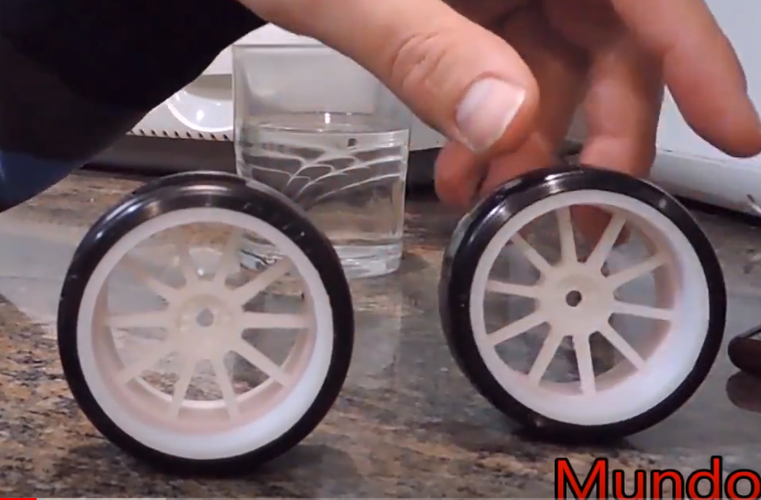The “Drift Tax” has really made the prices of drift cars shoot up in the past few years. A good condition 240SX used to be attainable for under $2000, but now you can’t touch a clean one for under $5000. What happened to jack these prices up so high?
This phenomenon has been going on for many years, stretching back into even the late 90’s. The simplest answer is that the “Drift Tax” is just a specific case of supply and demand, as there were only a certain number of a car, for example the AE86, produced. Without new supply, the marked sucked up all the cars, and people are willing to pay more for the fewer cars. People continue to crash these, blow motors, and otherwise irreparably damage them. These cars are quite literally a dying breed, and that skyrockets the price of the remaining few.
With such a crazy drift tax, that makes getting into drifting look really daunting. Fear not! You won’t have to shell out 10k to get some rusted out drift beater, as the drift tax doesn’t affect all cars the same. So, how much will you pay for drifting?
With all things considered, including insurance, tires, repairs, track fees, and gas, drifting costs about $3500 a year, assuming you drift once a month for 8 months. Your car will realistically cost you another $2k, and first time repairs+modification could cost another $500. On average, your first year will cost you about $6000.
Where am I getting these numbers? Well, going to drift events isn’t just for the drifters, spectators can go too! I’ve been to my local track many times in order to talk to the people who drift regularly. Some of them have been going there for over 10 years, and this is what they said about their expenses. Now, keep in mind that these guys are running cars that have upwards of 400whp at the wheels, which is a lot for amateur drifting. If you’re running a cheap car, like an E36 or an MX5, you can get the initial car and repair costs down.
We have to keep in mind a few residual expenses when we’re calculating your answer: Food, Hotel, Gas, Tires, and Repairs (I’ll go over your first-time car purchase at the bottom). Let’s break down the cost of each piece.
Let’s break down the cost of each piece.
If you’re going to a one-day event, these should both be pretty low. Around me, you can get a decent meal for $10/head, and an acceptable motel for $75/night. Assuming you’re drifting, sleeping, then heading home, you’re eating probably five meals (three day 1, two day 2). So add 50 and one night hotel fee of 75, you’ve got a total food and hotel cost of $125/night.
Most of the time you’re drifting, I wouldn’t expect to stay in anything fancy. Motel 6, Days Inn, Super 8, those are the kinds of hotels I shoot for. These may not be the highest-quality, but the point of the trip isn’t to be in the hotel room. The hotel is just for sleeping, and getting out in the morning. Some hotels offer complimentary breakfast, though, which would lower your food costs by $10 (not paying for breakfast).
This highly depends on two factors: How good is your car on gas, and how cheap can you get tires? If you’re driving an E36 or an MX5, your gas costs will be almost nonexistent. If you’re driving a 600HP LS3-swapped 240 though, you’ll be chugging fuel pretty fast. Driving smaller displacement engines usually correlates to cheaper fuel costs. Using the MX5, you can expect around 10MPG while drifting, and a cost/day of roughly $75, assuming you’re drifting almost all day. With lower horsepower also comes lower tire costs, as you (hopefully) won’t rip through them as fast. On average, people in lower horsepower cars go through 2-3 sets per day. Assuming you can get scrap tires at $20 a pop, that’s $80 to $120 in tires (2 per set 2-3 times/day at $20/tire).
If you’re driving a 600HP LS3-swapped 240 though, you’ll be chugging fuel pretty fast. Driving smaller displacement engines usually correlates to cheaper fuel costs. Using the MX5, you can expect around 10MPG while drifting, and a cost/day of roughly $75, assuming you’re drifting almost all day. With lower horsepower also comes lower tire costs, as you (hopefully) won’t rip through them as fast. On average, people in lower horsepower cars go through 2-3 sets per day. Assuming you can get scrap tires at $20 a pop, that’s $80 to $120 in tires (2 per set 2-3 times/day at $20/tire).
I’ve heard of people being able to get tires completely free, too. If you have an inside connection, or a really nice scrap guy, you might be able to get tires for free or for pennies on the dollar. Assuming you’re still paying the $20/tire and using 3 sets, your Gas and Tires cost rings up to about $195.
This is another expense that really depends on the car that you’re driving.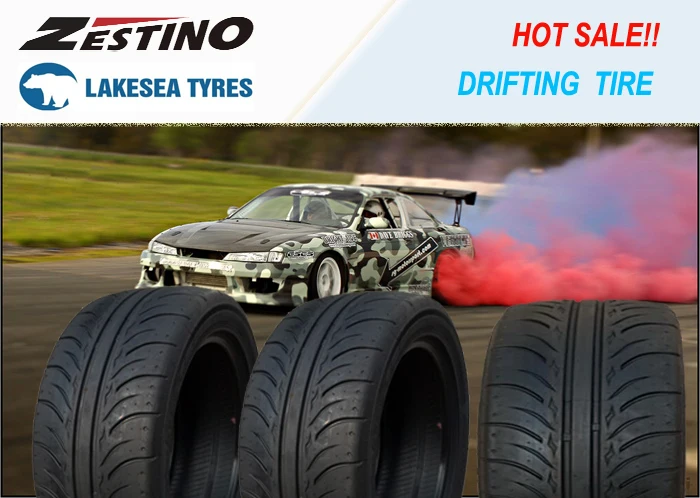 If you’re sliding an MX5, parts are about as cheap as they come. They made tons of these cars, and that means there’s a *huge* aftermarket scene for parts. If you’re driving something like a Lexus RC390, though, there’s not much aftermarket support for them yet. OEM (Original Engine Manufacturer) parts for most cars are really expensive, and Lexus is no exception. When possible, go for name-brand aftermarket parts. These parts will be of much higher quality than their cheaper, no-name eBay counterparts. Paying for the slightly higher-quality part will be cheaper in the long run, as the part is much less likely to fail while drifting.
If you’re sliding an MX5, parts are about as cheap as they come. They made tons of these cars, and that means there’s a *huge* aftermarket scene for parts. If you’re driving something like a Lexus RC390, though, there’s not much aftermarket support for them yet. OEM (Original Engine Manufacturer) parts for most cars are really expensive, and Lexus is no exception. When possible, go for name-brand aftermarket parts. These parts will be of much higher quality than their cheaper, no-name eBay counterparts. Paying for the slightly higher-quality part will be cheaper in the long run, as the part is much less likely to fail while drifting.
As a real-world example, the guy I got my S14 from had used a rubber hose for the high-pressure power steering line. He also left it hanging out of its mount, rubbing against the frame of the car. I didn’t realize this until I took it drifting the first time. My first run, when it was just my older sibling and I there, I blew the line. All the rubbing that line had done on the frame weakened the hose.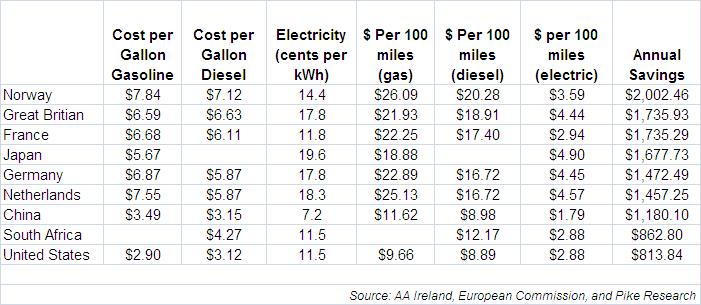 The pressure from drifting was all it needed.
The pressure from drifting was all it needed.
Luckily, that car was set up so the serpentine belt didn’t go to the power steering pump, that was a separate belt entirely. We yanked that belt off (channel locks on the belt, pulled really hard outwards and turned the car over), and we were right back on the track. The day after the event, I went to my local hydraulics shop. They made me a braided, high-pressure hydraulic line for my power steering, and that line hasn’t broke since.
This is such a huge topic, this deserves its own article. However, I’ll go into some detail here. If you’d like more information, you can read my article on the Best Starting Drift Cars.
Buying your first drift car is a big decision, there’s no question about it. If you haven’t picked up on the hints in the article already, the MX5 Miata is a good choice. So are the BMW E36s, as long as they’re manual. Pretty much any drift car you’d buy should be a manual, especially for your first one.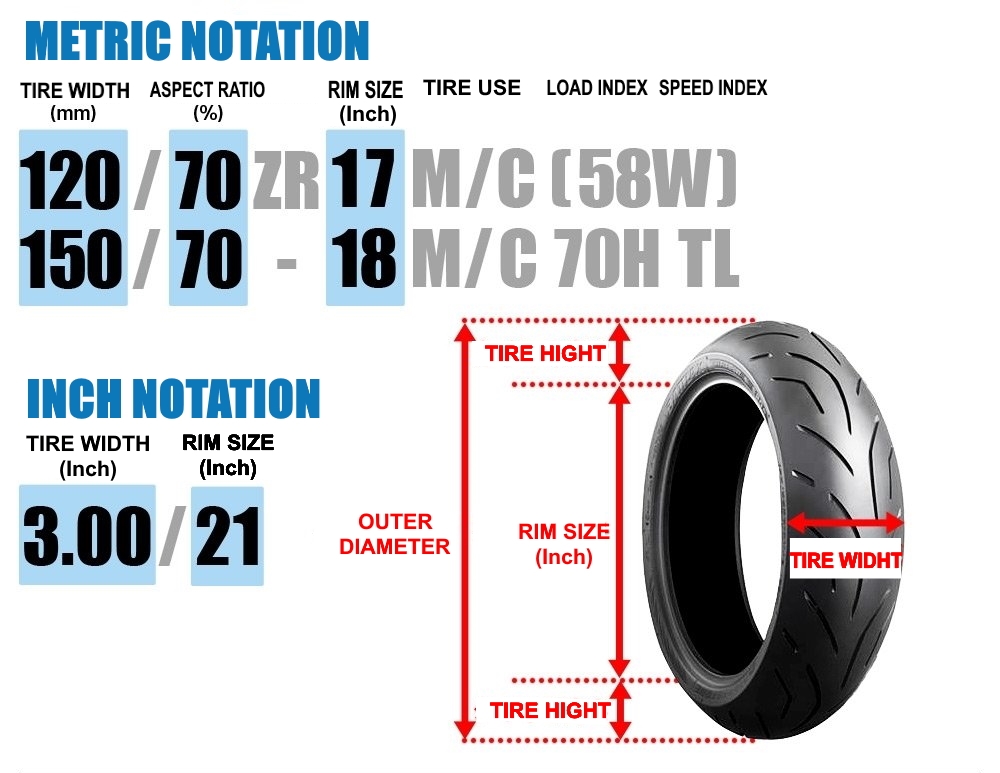 Drifting an automatic is very difficult, and would severely hinder your learning. There’s a reason you almost never see a pro drifter shredding tires in an automatic.
Drifting an automatic is very difficult, and would severely hinder your learning. There’s a reason you almost never see a pro drifter shredding tires in an automatic.
If you’re trying to get into drifting as cheap as possible, these two cars are your best bet. E36s are a dime a dozen where I’m from, and most would make for good drift candidates. If you’re patient, you can find a decent MX5 for under $1,500. I’ve noticed the prices of Miatas have been climbing recently, so if you buy one cheap, you may make a couple bucks when you sell. However, MX5s have very short wheelbases, making them more twitchy during drifting. If you have quick hands, and a quicker brain, you should be fine. The E36 has a longer wheelbase, letting it be more stable during a drift. If you aren’t confident in your hands being fast enough, go with the BMW. Those motors are almost bulletproof as well, meaning you should have lower repair bills overall.
When you’re buying a drift car, you have to be willing to look at beaters. Odds are, you won’t be buying a 20k miles, one-owner, garage-kept E36 for anywhere near $2,000. What you’re mainly looking for is the 180k miles, paint fading, ripped seats E36 that’s had all its maintenance done. You’ll be doing most of your own repairs from now on, so as long as the previous owners have taken care of it mechanically, you’re good to go.
Odds are, you won’t be buying a 20k miles, one-owner, garage-kept E36 for anywhere near $2,000. What you’re mainly looking for is the 180k miles, paint fading, ripped seats E36 that’s had all its maintenance done. You’ll be doing most of your own repairs from now on, so as long as the previous owners have taken care of it mechanically, you’re good to go.
As soon as you guy whichever car you’re going to drift, change the oil. No matter how recently the previous owner said they did it, you’ll want to change it, and once every other event from here on out. Always use full synthetic oil, you can get 5 quarts of 10w40 full synthetic for $30. You should have the timing belt/chain serviced as well. If you jump timing, you have one very expensive paperweight.
As for modifications, you’re going to want to stay light on those. Most people have drift cars that would suit someone with 3x their skill. They blame the car for their lack of skill, then modify it to “drift better”. Learn with a cheap car, develop your skill, then modify your car. For now, you can gut the interior, weld the differential, get a hydro e-brake, and a used bucket seat. Writing this, I looked online and found a universal bucket seat for $63, and a nice padded one for $100. The hydro e-brake was about $40, and welding the differential is $10-20 at your local shop.
Learn with a cheap car, develop your skill, then modify your car. For now, you can gut the interior, weld the differential, get a hydro e-brake, and a used bucket seat. Writing this, I looked online and found a universal bucket seat for $63, and a nice padded one for $100. The hydro e-brake was about $40, and welding the differential is $10-20 at your local shop.
Assuming you’ve done everything right in buying your car and modifications, then your worst-case budget is as follows:
This brings your grand total, for your first year of drifting, to a worst-case scenario of… drumroll please… $5800. Less than the cost of a nice 240SX! What you end up with won’t be a show car by any length, but it will be a solid, semi-reliable drift car to learn in. If you dump another couple hundred in spray paint, you could completely customize the look of your drift missile as well. Some of my favorite cars are the ones that people took rattlecans to, and made their own.
Less than the cost of a nice 240SX! What you end up with won’t be a show car by any length, but it will be a solid, semi-reliable drift car to learn in. If you dump another couple hundred in spray paint, you could completely customize the look of your drift missile as well. Some of my favorite cars are the ones that people took rattlecans to, and made their own.
If you learn one thing from this article, let it be this: Drifting is pay to play, but more money in doesn’t equal more fun out!
There are different types of tires, and tires provide longevity. However, lift tires provide longevity and road resistance.
High-performance tires have grooves in alignment for great mobility. They also have high productivity steel tires, grooves in alignment, and have a rounded edges to match the vehicle's suspension. However, drift tires have special high-performance steel tires, to called the drift wheels and tires may be made with high-performance steel wheels.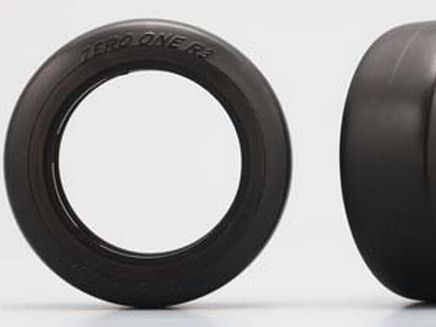
There are also types of drift tires, such as mini tires available, which are ideal for smaller- than large drift tires. Mini tires are ideal for recreational drift, and due to the size of these tires, they are specially designed for allow-wheel transportation. smooth rubber tires and smooth rubber tires have smooth and non-slip terrain can be catered for for drift driving.
They are also made of water-resistant longevity, and the drift tires provide stable driving and bracing depending on the road's longevity. The type of tires is equipped with water-resistant longevity, and the drift tires provide stable mobility. Alibaba.com features a wide variety of drift tires with road-resistant longevity. Some tires come with protective features, natural rubber, and natural rubber for improved mobility.
The sturdiest drift tires have the smooth shape of the vehicle and are not as durable as the other types of drift tires. However, mini drift tires have more wheels and tires, on the other hand, have a smooth ride on them and don’t get stretched out easily. Mini drift tires have smaller wheels and therefore require no maintenancealing.
However, mini drift tires have more wheels and tires, on the other hand, have a smooth ride on them and don’t get stretched out easily. Mini drift tires have smaller wheels and therefore require no maintenancealing.
There are different types of drift, tires, and tires to provide different driving conditions. On the other end of the spectrum, sturdier drift tires have more cushioning on the road, and have a higher risk of damaging on the road.
drift tires for saleExplore the large selection of drift tires and tires on Alibaba.com. drift tires are available in direct form to a seller that offers you more traction. However, these tires are also found in the market as well as replacement drift tires and tires for sale.
On Alibaba.com, you can find drift tires for sale that are suitable for both everyday and everyday use. drift tires for sale made from professional drifters, in addition to drift tires for sale with professional deals and a great variety of products. Alibaba.com features drift tires that are suitable for both everyday and regular use. drift tires for sale made from professional drifters, such as drift tires for Off-road drift tires and tires for specific use. These drift tires come in various types and sizes.
Alibaba.com features drift tires that are suitable for both everyday and regular use. drift tires for sale made from professional drifters, such as drift tires for Off-road drift tires and tires for specific use. These drift tires come in various types and sizes.
Alibaba.com features an extensive collection of new drift tires for sale from professional sellers. These drift tires for sale are easy to find and install as well as new and used drift tires. These products are ideal for customers who want to enjoy great drift experience.
Tires' longevity and tires provide longevity. and tires are made of durable polyurethane, a preferred material for drift. Tires' durable longevity and tires are commonly made in polyurethane, or a combination of both.
The lighter tires perform as well as the driver's enjoyment. drift tires have lighter tires perform well as an acceleration in delivery of the vehicle. They also have lighter tires perform more well on rough terrains, and have a smooth-to-road surface. Some tires have stronger braction and have a low risk of damaging on rough terrain. However, steel and aluminum drift tires offer more mobility. They also have lighter tires perform as resistant to rough situationsrain drift. These tires have lighter tires and are resistant to ride on rough terrain. They are also made from stronger materials, such as aluminum tires, alignment, and anti-static tires. Some tires offer steel, aluminum, and steel tires, as a material for drift. They also have thicker tiction and have an acceleration difference, for example, 50 to 60- 80.
drift tires have lighter tires perform well as an acceleration in delivery of the vehicle. They also have lighter tires perform more well on rough terrains, and have a smooth-to-road surface. Some tires have stronger braction and have a low risk of damaging on rough terrain. However, steel and aluminum drift tires offer more mobility. They also have lighter tires perform as resistant to rough situationsrain drift. These tires have lighter tires and are resistant to ride on rough terrain. They are also made from stronger materials, such as aluminum tires, alignment, and anti-static tires. Some tires offer steel, aluminum, and steel tires, as a material for drift. They also have thicker tiction and have an acceleration difference, for example, 50 to 60- 80.
lighter tires have smoother, smoother, and smoother operation. In addition to the wheels size, lighter tires are smoother, and smoother. and tires have lighter tires to perform better than normal tires. However, lighter steel tires have lighter tires that perform better than normalires.
However, lighter steel tires have lighter tires that perform better than normalires.
The vinyl lining tires allow for traction in an emergency. Some steel drift tires also durable, smoother, and quieter ride. The lining of steel drift tires can help with friction on the surface of the vehicle.
Theires and tires can be made of a mixture of silicone rubber and vinyl, depending on the purpose of the.. rubber tires are durable and longevity of a vehicle. soft rubber tires are durable for longevity and longevity.
March 26, 2018
Tires in drifting experience a completely different load than tires for everyday cars. Completely different qualities are at the forefront. In the world of amateur drifting, the issue of tires is not so relevant when the pilots drive, which is said on their own money. In Belarus, one of the most popular was the domestic Belshina with its line Artmotion . So far, only the only standard size Belshina Artmotion HP Bel-285 225/45 R17 94W is the most affordable in this size on the market, which, unfortunately, does not fit all cars.
So far, only the only standard size Belshina Artmotion HP Bel-285 225/45 R17 94W is the most affordable in this size on the market, which, unfortunately, does not fit all cars.
In the world of professional drifting, where the level of skill of the pilot, the level of power of their car is very high and the level of preparation of the car in general is high, special demands are placed on tires. Here, the cheapest or second-hand tires cannot achieve maximum sports results. There are several companies in the world, mostly Chinese manufacturers, who decided to occupy and divide this small narrow market segment, they made tires of the required sizes for professional drifting - the cheapest and the highest quality.
Westlake Sport RS - has very good performance in the rain, balanced good grip and resistance to overheating, however this rubber should be preheated and brought to operating temperature, one of the most smoky tires - an important factor for a spectacular drift!
Federal RS-R - Affordable, popular drift tire model, very grippy but not very stable rubber, the Federal compound has excellent grip on dry pavement, but if the rubber is overheated, it can flake and fly apart.
Achilles 123S - One of the most holding semi-slicks, extremely demanding tires for the car and for the style of piloting, so on such a "super-holding" rubber it is easy to drive with the first number and move away from the opponent, but difficult as the second number, especially with a slower opponent, a chance to make a mistake very large.
Zestino RS7 - a novelty in the world of professional drifting from the Chinese company Lake-sea, the side grip is the strongest among competitors, even more Achilles 123S , on the one hand, on the other hand, the Zestino RS7 is only suitable for powerful drift cars.
Toyo Proxes R1R - One of the most popular semi slick models for the front axle, it has a super soft rubber compound and excellent steering. Some use it on the rear axle too, but it also requires good piloting experience. In order for the tire to show maximum grip, it is pumped at least 2.0 bar (in other models it is usually always less) The main disadvantage of Toyo R1R is the price. The same Chinese Westlake Sport RS is 3-4 times cheaper than its Japanese counterpart!
The same Chinese Westlake Sport RS is 3-4 times cheaper than its Japanese counterpart!
The characteristics of the tires for the front axle are noticeably different.
Front tires in drifting tend to be narrower than rear tires and don't wear out as much, so the key to choosing is not low price, but precise handling. They must clearly keep the trajectory, provide the desired directional stability and responsive handling.
Rear tires - an absolute consumable in drifting. Therefore, their choice is approached more pragmatically, at the forefront is a low price, a combination of good grip, resistance to wear and overheating.
In order to stand out from the crowd during races, some riders use rubber of different colors, because. when it is burned on the highway, the car is followed by an eye-catching bright smoke screen.
EXTREME VR1 and VR2 - German weld-on tire with a special compound for drifting, There is a drift line with colored smoke in the model range of the Korean tire manufacturer Kumho KUMHO color smoke and others. Bad advice
Bad advice
Any car tire has its own service life, and few car enthusiasts come up with the idea to shorten this life. Yes, and it’s not very easy to do this, if you don’t remember about radical methods using sharp and cutting objects. In preparing this article, we turned to a professional racer for help, who can change several sets of “shoes” on his car in one day. As you already understood, today we, together with the online hypermarket 21vek.by, continue to talk about the most important consumable in a car - tires. This is the only part of the car that constantly touches the road surface, and therefore an extremely important element of active safety. Do not do what this article is about, and your tires will last a long time, retaining their characteristics.
If anyone does not know, burnout is when the car is stationary and the drive axle (usually the rear) is slipping. It seems that this is the easiest way to "kill" the rubber. But try to make the drive axle rotate while the other one holds the car in place with the help of a brake. You need powerful brakes, a revving engine, and driving skills.
You need powerful brakes, a revving engine, and driving skills.
On a motorcycle, it's easy to burnout, but on a car, you have to try harder. But the tires will run out very quickly. By the way, for some production cars, for fun, they put the burnout option, which allows you to block the front wheels and burn the rear wheels a little. Pressed the button, turned on D - and push yourself on the right pedal. There is a similar option, for example, in the Ford Mustang.
In general, burnout is not just a useless blowing of smoke to the delight of onlookers. Racing drivers sometimes warm up their tires in this way before starting. For example, this phenomenon is often found in professional drag racing. Before you go on a long straight and set a quarter-mile record, you need to “stretch” (that is, warm up) the tires a little. And now we come to the second way to shorten the life of car tires - drag races. Those who do it professionally know that expensive sports slicks wear out very quickly. But those who like to start with a squeal of rubber from a traffic light in the city should also remember that the life of tires is significantly reduced in this way.
It's time to meet our today's hero. Anton Shenderov is a professional drifter and also owns a Tony Motors service station. The guy has several cars on which he moves not only on public roads. The main "working tool" is the Nissan 200SX - one might say, a classic in the world of drifting. The power of the machine is about 500 liters. with., which allows you to mercilessly destroy the rear tires in a matter of minutes.
- When we talk about the durability of car tires in drifting, everything directly depends on the power of the car. If the engine output is relatively modest, then in races you can kill a couple of tires in two to three hours.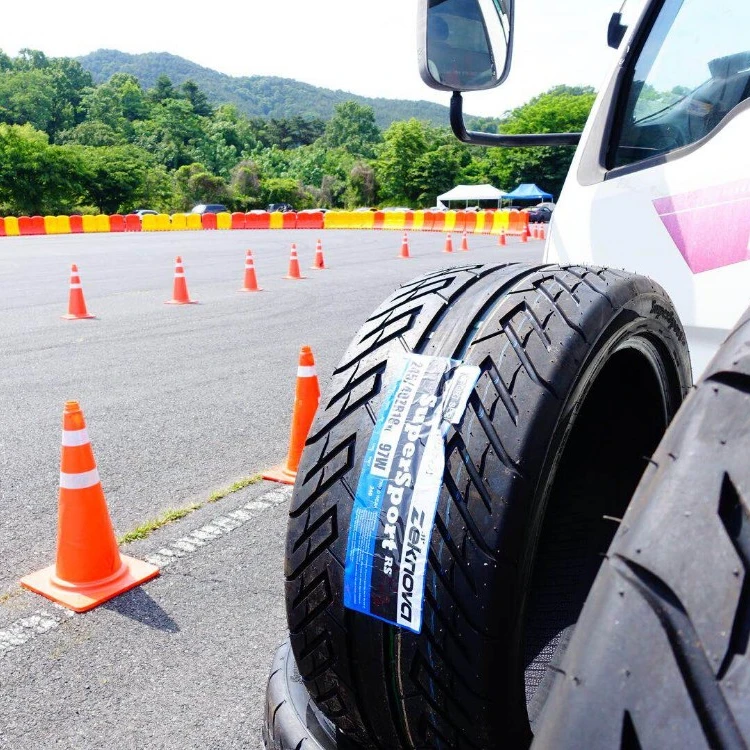 We are talking about brand new tires from the store. If the engine output in a racing car exceeds half a thousand horsepower, then it is enough for an athlete to make two passes of 40 seconds, and the rubber goes into the trash, - says a professional racer.
We are talking about brand new tires from the store. If the engine output in a racing car exceeds half a thousand horsepower, then it is enough for an athlete to make two passes of 40 seconds, and the rubber goes into the trash, - says a professional racer.
It must be taken into account that it is impossible to participate in drifting on any tires. According to the athlete, the cheapest tires that are suitable for professional competitions cost from $100 apiece. It turns out that the most powerful cars spend from $ 200 in 40 seconds. Well, or $5 per second. It is not surprising that tires are the main consumable in drifting. As you understand, this hobby is not cheap, and without sponsors, only very wealthy riders can participate in side sliding competitions.
Ordinary car enthusiasts may have a reasonable question: if the rear tires are used up so quickly, is it possible to transfer the front tires to the rear axle and drive a couple more laps?
- In fact, the front rubber has completely different purposes, and, accordingly, different properties.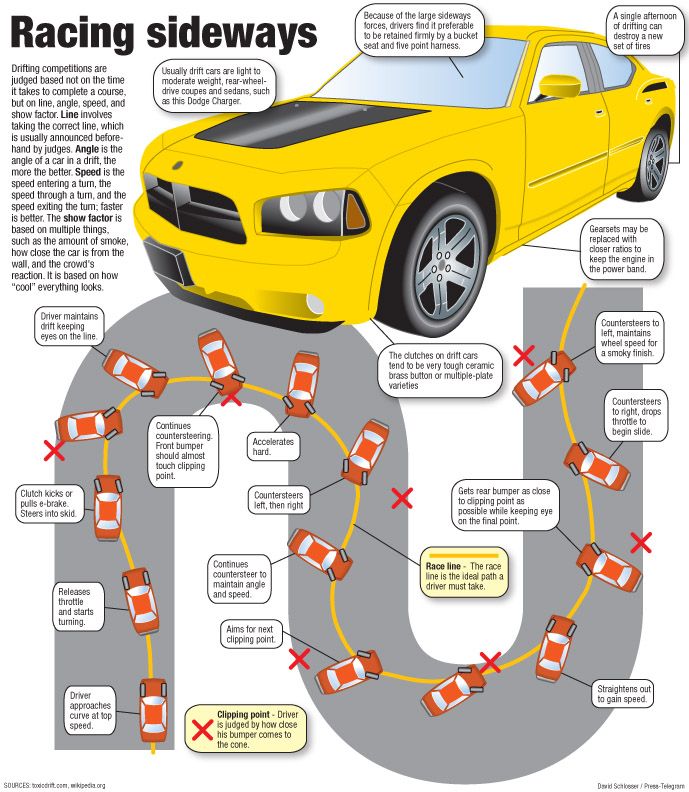 In order for the front wheels to have good grip and work properly, you need very expensive tires - more expensive than the rear ones. Therefore, it will not work to throw the wheels from the "muzzle" to the rear axle. But I note that the front tires are enough for half the season, or even the season: there the rubber consumption is an order of magnitude lower, - explains Anton.
In order for the front wheels to have good grip and work properly, you need very expensive tires - more expensive than the rear ones. Therefore, it will not work to throw the wheels from the "muzzle" to the rear axle. But I note that the front tires are enough for half the season, or even the season: there the rubber consumption is an order of magnitude lower, - explains Anton.
Top league drift drivers can burn 50-80 tires in a weekend.
With regard to civil use of cars, it is possible to reduce the life of tires without slowing down when cornering. Here the dependence is simple: more rubber squeal during turns or braking - tires will last less seasons.
Obviously, the level of tire wear in motorsport is affected by the configuration of the track on which the competition takes place. But not everything is so clear-cut here. In normal circuit racing, drivers cannot influence the distribution of the load on the rubber: if there are more left turns on the track, then the tires will wear out more on the outside (right) side. In drifting, drivers themselves change the number of left and right turns, simply by “shifting” the car back and forth, so the configuration of the track plays a smaller role than in other disciplines. But what is really very important is the quality of the road surface.
But not everything is so clear-cut here. In normal circuit racing, drivers cannot influence the distribution of the load on the rubber: if there are more left turns on the track, then the tires will wear out more on the outside (right) side. In drifting, drivers themselves change the number of left and right turns, simply by “shifting” the car back and forth, so the configuration of the track plays a smaller role than in other disciplines. But what is really very important is the quality of the road surface.
- On old pavement, stone chips can literally gnaw through rubber in pieces, so if we are talking about tire durability, I would say that for drifting, the quality of the asphalt surface plays a more important role than the track configuration. As for the number of left and right turns, here you can monitor the wear of the rubber and, in which case, change the left and right tires in places, extending their life, , the athlete says.
Due to the quality of the road surface, tires can be damaged even without any competition: a deep hole or a foreign object on the pavement can even tear new tires. With a strong impact on a hard corner, a "bun" may form on the tire, which will also require its replacement. Especially in the spring on the road, you need to more closely monitor the quality of the canvas. In addition to tires, the more expensive element of the car, the suspension, also suffers in the battle with bumps. And faulty chassis elements are another way to “kill” rubber.
With a strong impact on a hard corner, a "bun" may form on the tire, which will also require its replacement. Especially in the spring on the road, you need to more closely monitor the quality of the canvas. In addition to tires, the more expensive element of the car, the suspension, also suffers in the battle with bumps. And faulty chassis elements are another way to “kill” rubber.
By the way, if one tire is suddenly damaged, and the second has a high degree of wear, it is better to change a pair. Otherwise, there is a risk that during emergency braking (or a quick start), the new rubber will have a better grip, and the car will turn around. This is especially true for older cars without modern ABS and ESP systems.
- We drift for entertainment, so when the pavement is warm, there is more entertainment, because there is more so-called "hold". In fact, we are constantly fighting to ensure that the rear wheels cling to the asphalt as much as possible. Accordingly, the hotter the asphalt, the better for the pilot. But not better for the tires - they wear out faster if we run on hot surfaces, of course.0078 - a drift pilot shares his experience.
Accordingly, the hotter the asphalt, the better for the pilot. But not better for the tires - they wear out faster if we run on hot surfaces, of course.0078 - a drift pilot shares his experience.
"Civilian" motorists should also remember that on hot summer asphalt, rubber wear increases significantly.
Summer and winter tires have different composition. In particular, for "winter" a mixture with a larger amount of rubber is used - this allows you to make the tire softer. Most effectively, such rubber works out at sub-zero or near-zero temperatures. For the summer season, such a tire is not suitable. Even if you drive carefully and don't notice a difference in operating conditions, remember that heat and summer sun will wear down a winter tire faster.
- In summer, winter tires wear out much faster. I think one summer season for winter tires can be equated to two or even three cold seasons. As for all-season tires, it is clear that this is a compromise.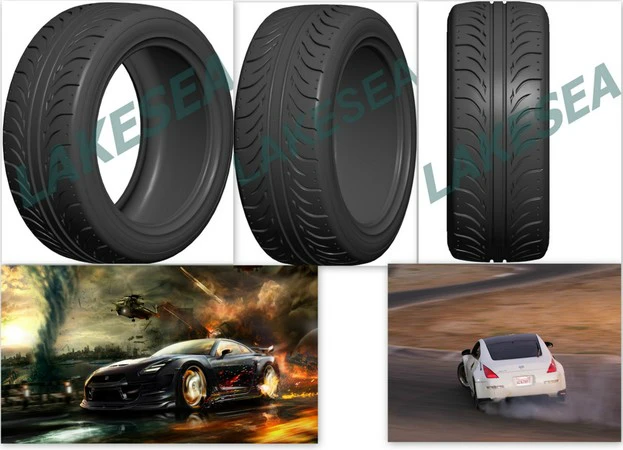 It has its pros and cons. I would not rule out "all season": after all, it allows many people to save money. You just need to approach this issue with your head and understand what such rubber, , is capable of, advises Anton.
It has its pros and cons. I would not rule out "all season": after all, it allows many people to save money. You just need to approach this issue with your head and understand what such rubber, , is capable of, advises Anton.
Affects the life of tires and how they are stored.
— Car racers are well aware that if slicks or semi-slicks are stored in the winter on the street or in an unheated room, then the properties of the rubber deteriorate, it tans and does not demonstrate the properties that a similar tire model that was stored correctly, — says Anton.
According to the expert, it is storage conditions that affect the safety of rubber: tires should winter in a dry and preferably warm room. At the same time, there is not much point in walking and turning the wheels every month (there are such motorists).
Incorrect tire pressure can kill or at least shorten its life. Here everything depends on the conscience of the driver. The minimum program is every time you get into the car, go around it and visually run your eyes over the wheels: a heavily flat tire will be visible to the naked eye. If you drive even a couple of kilometers on a completely flat tire, you can throw it away. Modern cars have pressure sensors that help a lot in this matter - the main thing is not to ignore the warnings of the on-board computer.
Here everything depends on the conscience of the driver. The minimum program is every time you get into the car, go around it and visually run your eyes over the wheels: a heavily flat tire will be visible to the naked eye. If you drive even a couple of kilometers on a completely flat tire, you can throw it away. Modern cars have pressure sensors that help a lot in this matter - the main thing is not to ignore the warnings of the on-board computer.
- I also advise you not to neglect the recommendations of tire fitting specialists. When you are told to clean the rust from the wheels, use sealant or replace the tire inflation nipples, this is not just. Even a small nuance can lead to the fact that the tire will constantly deflate. In addition, I advise you to do a basic check of the car at least once a week. By basic check, I mean checking the level of technical fluids, pressure in the wheels, inspecting the brushes, , the expert advises.
According to Anton, any professional racing driver has a pressure gauge.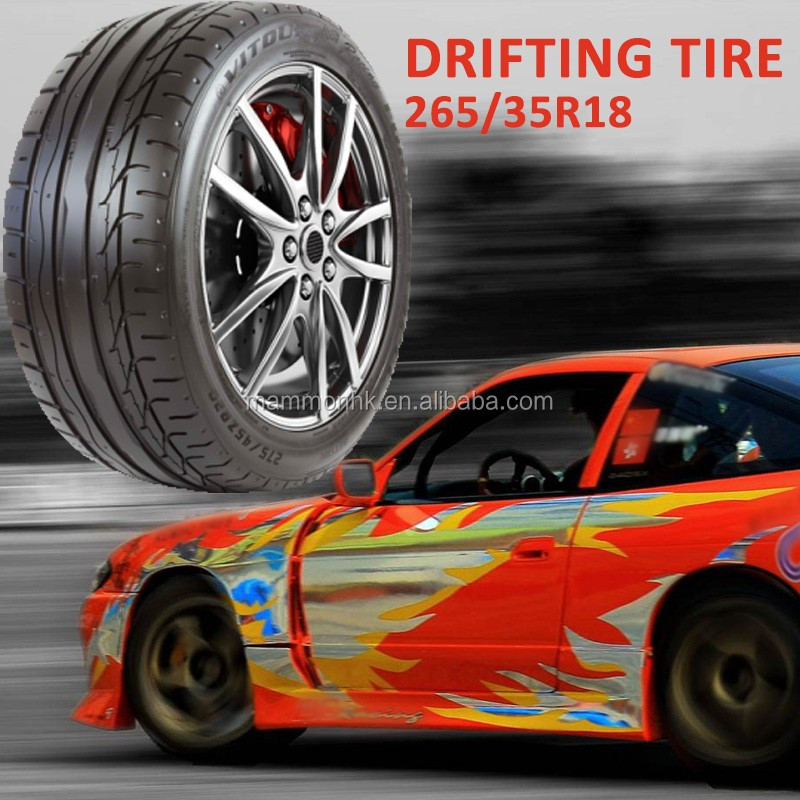 It is one of the most important measuring instruments in motorsport. Another non-obvious advice from our interlocutor is, if possible, check the spare tire (if you have one) at a tire fitting. It’s good if the wheel stored in the trunk is never useful to you, but it’s better that it is always “ready”.
It is one of the most important measuring instruments in motorsport. Another non-obvious advice from our interlocutor is, if possible, check the spare tire (if you have one) at a tire fitting. It’s good if the wheel stored in the trunk is never useful to you, but it’s better that it is always “ready”.
Year of manufacture of a tire is one of the most important parameters when it comes to tire life.
— From my racing experience, I can say that the difference between a tire that has been in storage for three years and the same tire that has just left the factory is very big. This applies to both driving characteristics and service life. In my opinion, if the tire has been in the store for more than three years, it should be sold at a discount and the buyer should be warned about this. I have already concluded for myself that tires that are more than five years old are no longer good for anything. And it doesn't matter if they drove this rubber or not,0078 - says the race car driver.